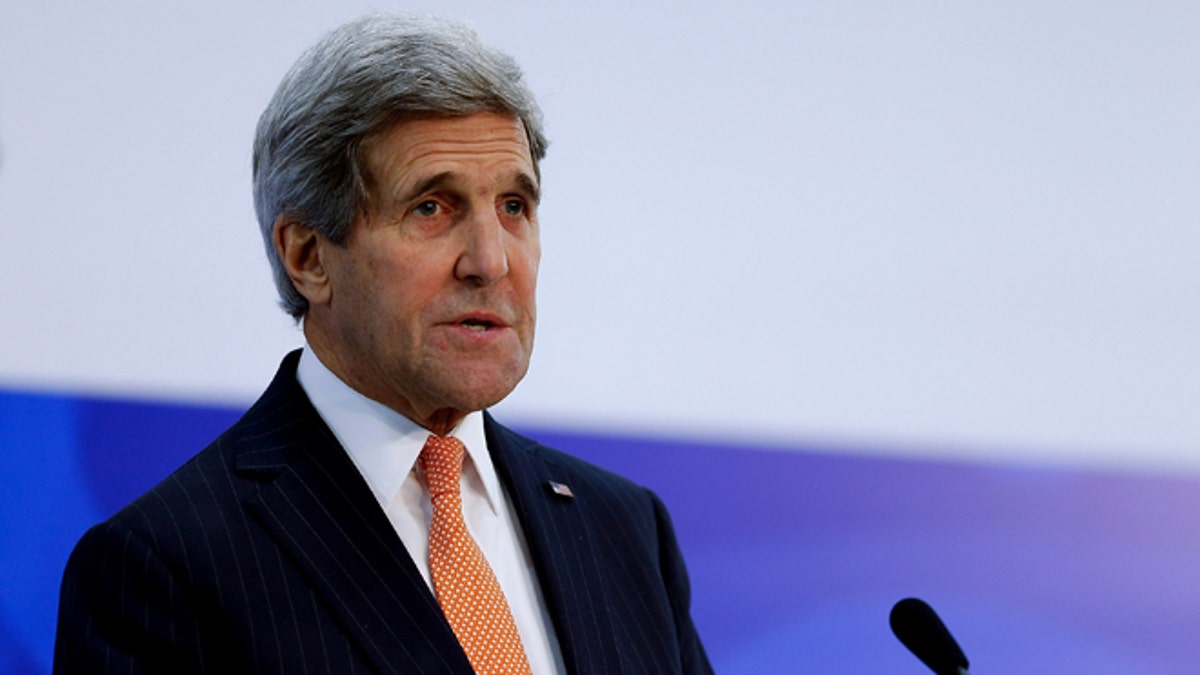
BEIJING, CHINA - NOVEMBER 08: U.S. Secretary of State John Kerry speaks during a press conference during the Asia-Pacific Economic Cooperation (APEC) Summit at the China National Convention Center on November 8, 2014, in Beijing, China. From November 7-11, the APEC 2014 Summit will bring together leaders and senior administration from 21 countries, with U.S. President Barack Obama and Russian President Vladimir Putin expected to attend. (Photo by Lintao Zhang/Getty Images) (2014 Getty Images)
Secretary of State John Kerry will arrive on later this week in the Peruvian capital of Lima to attend a United Nations conference on climate change, where he will bolster the United States arguments that the country is meeting its targets for reducing emissions in heat-trapping greenhouse gases despite an uptick last year.
Kerry, who was one of the main architects in a deal between the U.S. and China to cut carbon emissions, is scheduled to arrive on Thursday amid a growing questioning from both rich and poor countries over how exactly the U.S. plans to cut emissions 17 percent by 2020 based on 2005 levels.
Emissions were down about 10 percent but rose slightly last year and in early 2014 due to an "extraordinarily cold winter" that required high energy consumption, deputy U.S. climate adviser Rick Duke said in response to a question from China. He said emissions are projected to be down next year.
South Africa challenged whether the U.S. target for 2020 is ambitious enough, asking how much of the emissions drop since 2005 has been due to recession.
Duke said about two-thirds was policy-driven, with the rest attributable to factors including the recession and a switch from high-polluting coal to natural gas in power generation.
Since the U.S. Congress voted down climate legislation in 2009, Obama has largely leaned on existing laws to make progress — boosting fuel standards for cars and trucks and proposing stricter controls on carbon pollution from power plants.
"I think we are making good progress," Todd Stern, the U.S. delegation chief, told reporters at his first news conference at the two-week negotiations.
Experts said the jury is still out on whether the U.S. target can be reached.
"The U.S. definitely has a shot, if it continues to implement measures under its Climate Action Plan. But it is by no means guaranteed," said Alden Meyer of the Union of Concerned Scientists.
Jake Schmidt of the Natural Resource Defense Council said more measures are needed, including reducing methane loss in leaks from refining and drilling for oil and gas as well as finding alternatives for the super-potent greenhouse gases used in air conditioners and refrigerators.
The White House pledged last month to lower U.S. carbon pollution 26 percent to 28 percent from 2005 levels by 2025 as part of the negotiations for a global climate pact next year. Those goals are expected to face stiff resistance from climate-skeptical Republicans in Congress.
"Ultimately the U.S. must confront its profound political divide on climate change to provide certainty that it will meet its pledges," said Paul Bledsoe, who worked on climate issues in the Clinton White House.
Based on reporting by the Associated Press.
